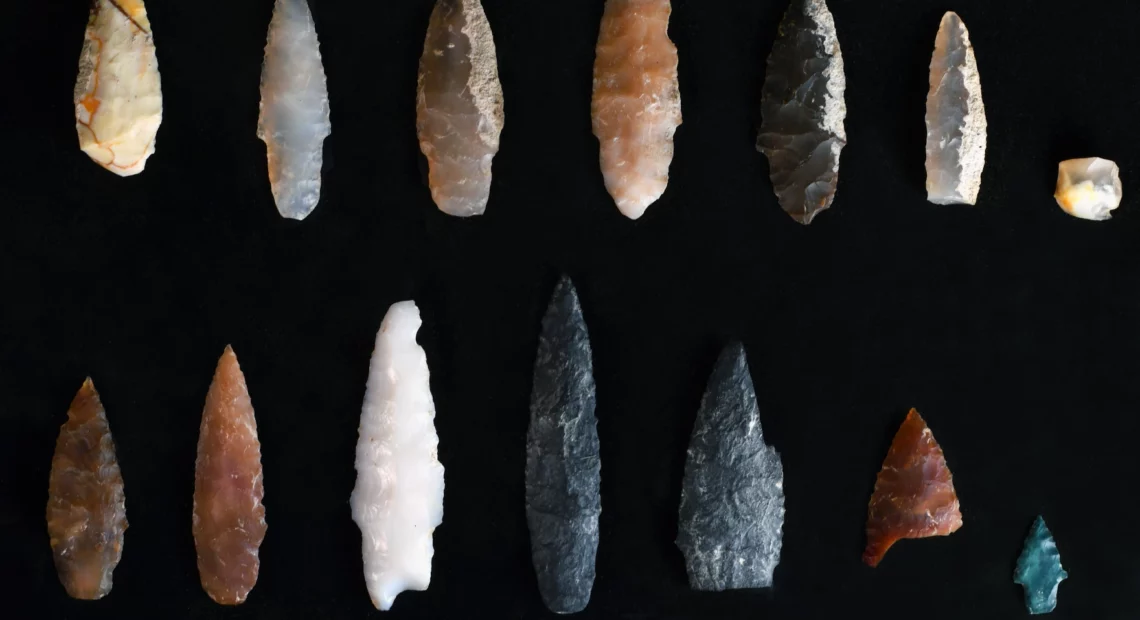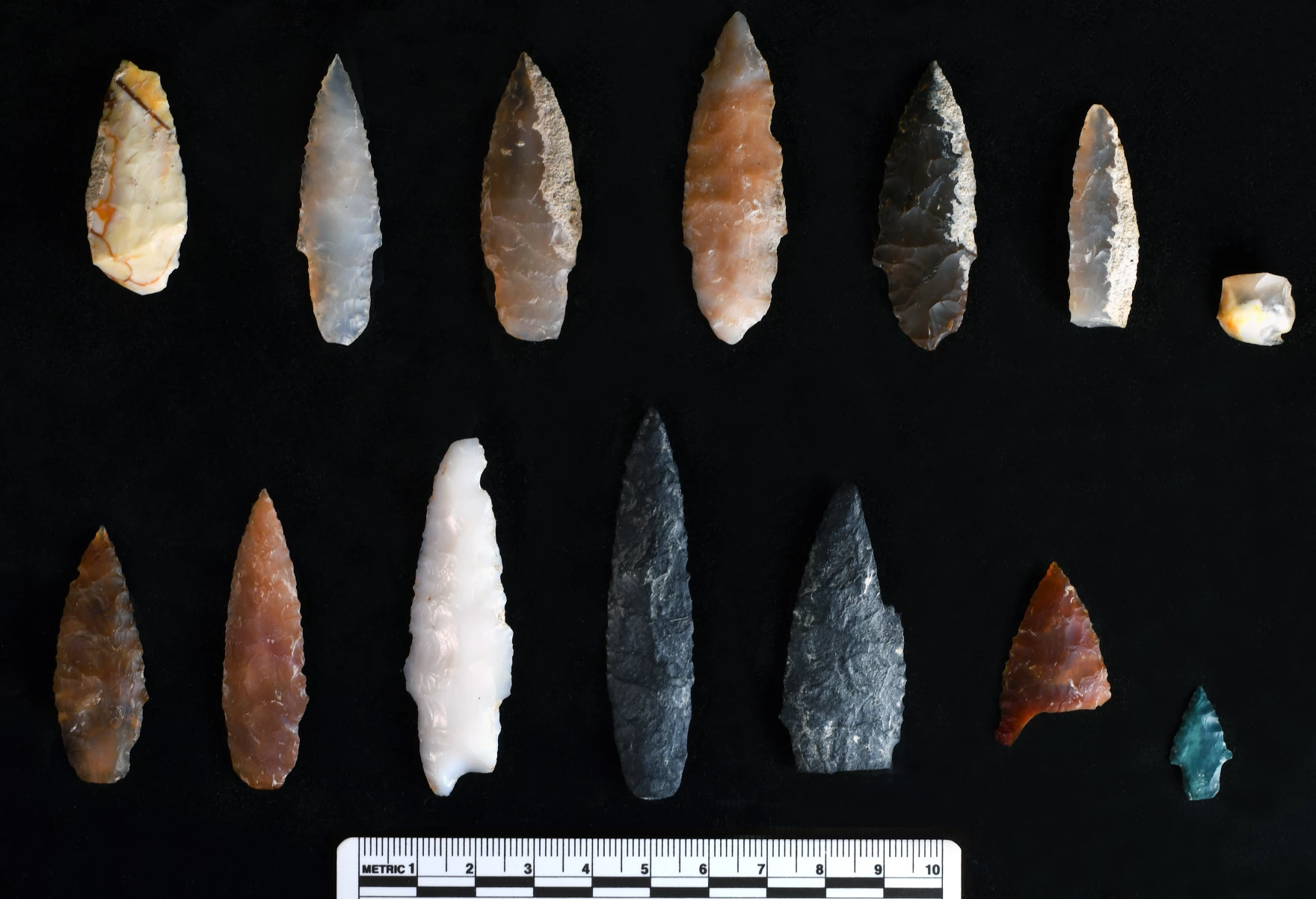It was a balmy June day back in 2012 at Cooper’s Ferry along the Salmon River in Idaho.
That’s when an anthropology professor at Oregon State University, Loren Davis, found himself trying to match the exact spot where a photo had been taken back in the early 1960s.
He held the photo printed on clear plastic up against the background of the canyon, trying to match the slow-growing hackberry trees.
“I walked around the site, and I held it up until I could match all the trees in the background,” Davis said. “I was like ‘Ahh-haw! It’s right there.’ Right in front of me where I am seeing this match is where they did their work. So then we just dug in this area and found his trench.”
Davis knew he’d find something here in the ancient village of Nipéhe, known to be the traditional territory of the Nez Perce people. But he didn’t know he’d find such striking evidence that would nudge artifacts of the history of the Americas back another 3,000 years.
Davis, in coordination with the Nez Perce Tribe and with research students from OSU, found 14 stone projectile points – some fragments. Carbon dating of adjacent animal bones date back nearly 15,800 years.
The findings were published recently in the journal Science Advances.
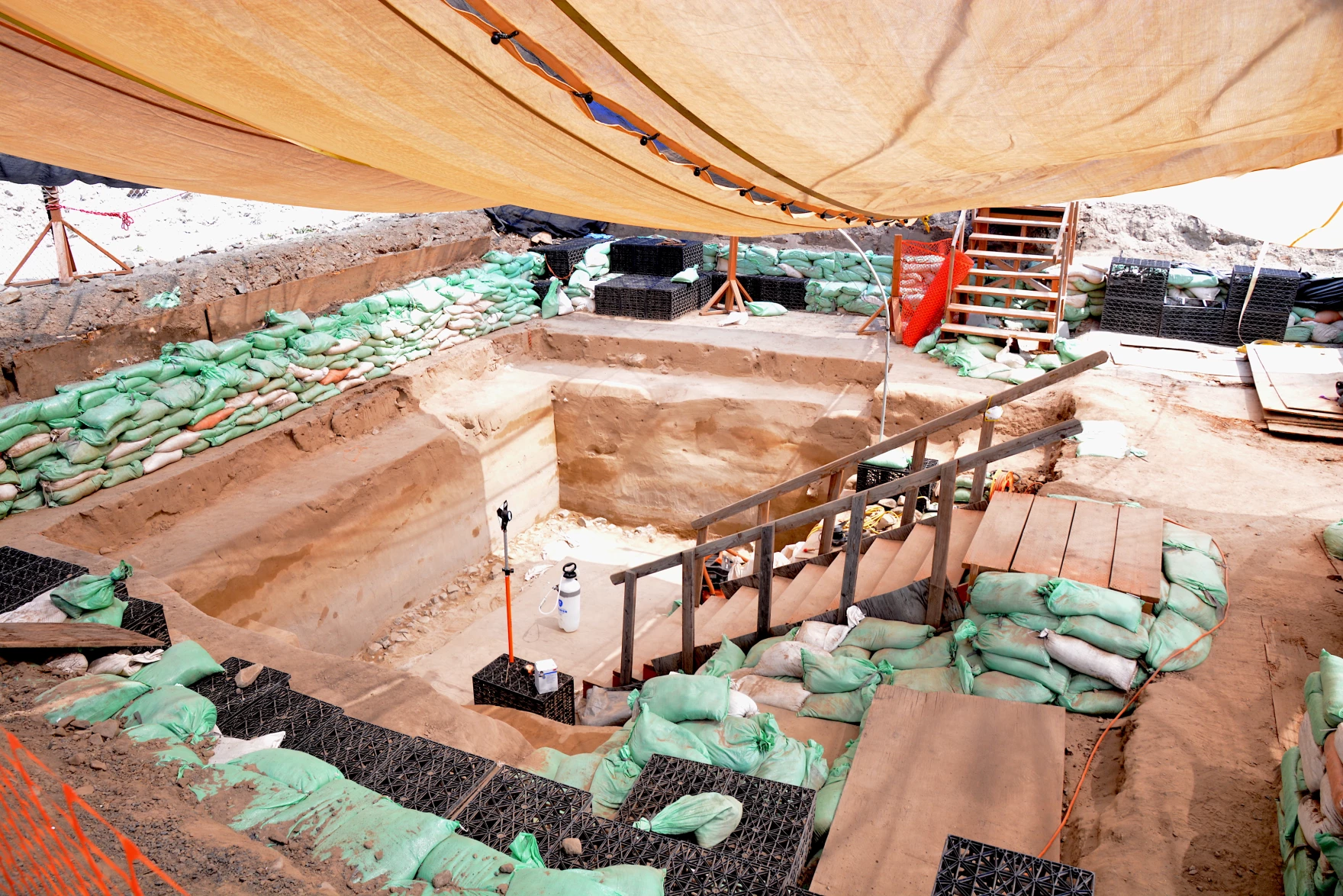
Overview of the Area B excavations at the Cooper’s Ferry site in 2017. Credit: Loren Davis/ Oregon State University
The earlier archeologist dug the trench with a backhoe in the ‘60s. Davis and his team used hand-held masonry trowels, wooden sculpting tools, spoons and even marmalade knives – looking for anything larger than a dime.
The earlier researcher would have needed charcoal or bones the size of a baseball or larger to carbon date. Now, with advances in dating –Davis could test fragments of charcoal or bone found at the same depth of the points.
The organic fragments only had to be the size of a piece of rice for an accurate date. When bones and stone flakes are found at the same level in the sediment, Davis said, that is when the ages of things become more clear.
“The age of the bone shows us the timing of when these stone chips were discarded,” Davis said. “We scrape the sediment away to try and reveal things that were buried. So it’s a careful process. We try to find things larger than a dime or bigger in the ground as we work. And that’s why it takes us 10 years to get this stuff done.”
The researcher found some items in the trench that had been missed by the diggers in the ’60s. But he kept digging below where they went. That’s where he found these very oldest finds. That these finds were deeper than others had explored is important – we have to let go of past assumptions, Davis said.
“The record of Native American peoples does extend back much further than we thought,” he said. “So if there is going to be a construction project for a road, or a highway, or an airport, you have to anticipate that things could be that old in deposits much deeper than you thought. That’s a responsibility that we have to make sure we do right by people’s cultural heritage resources. A lot of it begins with knowledge – you have to understand the stuff could be there.”
The projectile points were uncovered over multiple summers between 2012 and 2017, with the work paid for by a partnership between OSU and the federal Bureau of Land Management, OSU officials said. All excavation work has been completed and the site is now covered. The BLM installed interpretive panels and a kiosk at the site.
Davis has studied the Cooper’s Ferry site since the ‘90s when he was an archaeologist with the BLM, OSU officials said. Now, he brings undergraduate and graduate students from OSU to work the site in the summer through a BLM partnership. The team also works closely with the Nez Perce Tribe. Tribal youth are able to work on the site, and Davis communicates all findings with the tribe.
Body of work
The points take extreme knowledge, culture and skill to manufacture, Davis said. Indigenous people carefully selected the rocks, then expertly worked them against a deer or elk antler until the edges flaked. And it’s likely when they became dull, they re-flaked the points to sharpen them again. The points are so sharp they can travel deep into a hunted animal and cause lethal internal injuries. This deadly stone technology helped the people survive in their landscape, Davis said. They likely attached the points to darts, rather than arrows or spears.
“There’s an assumption that early projectile points had to be big to kill large game; however, smaller projectile points mounted on darts will penetrate deeply and cause tremendous internal damage,” Davis said in a press release. “You can hunt any animal we know about with weapons like these.”
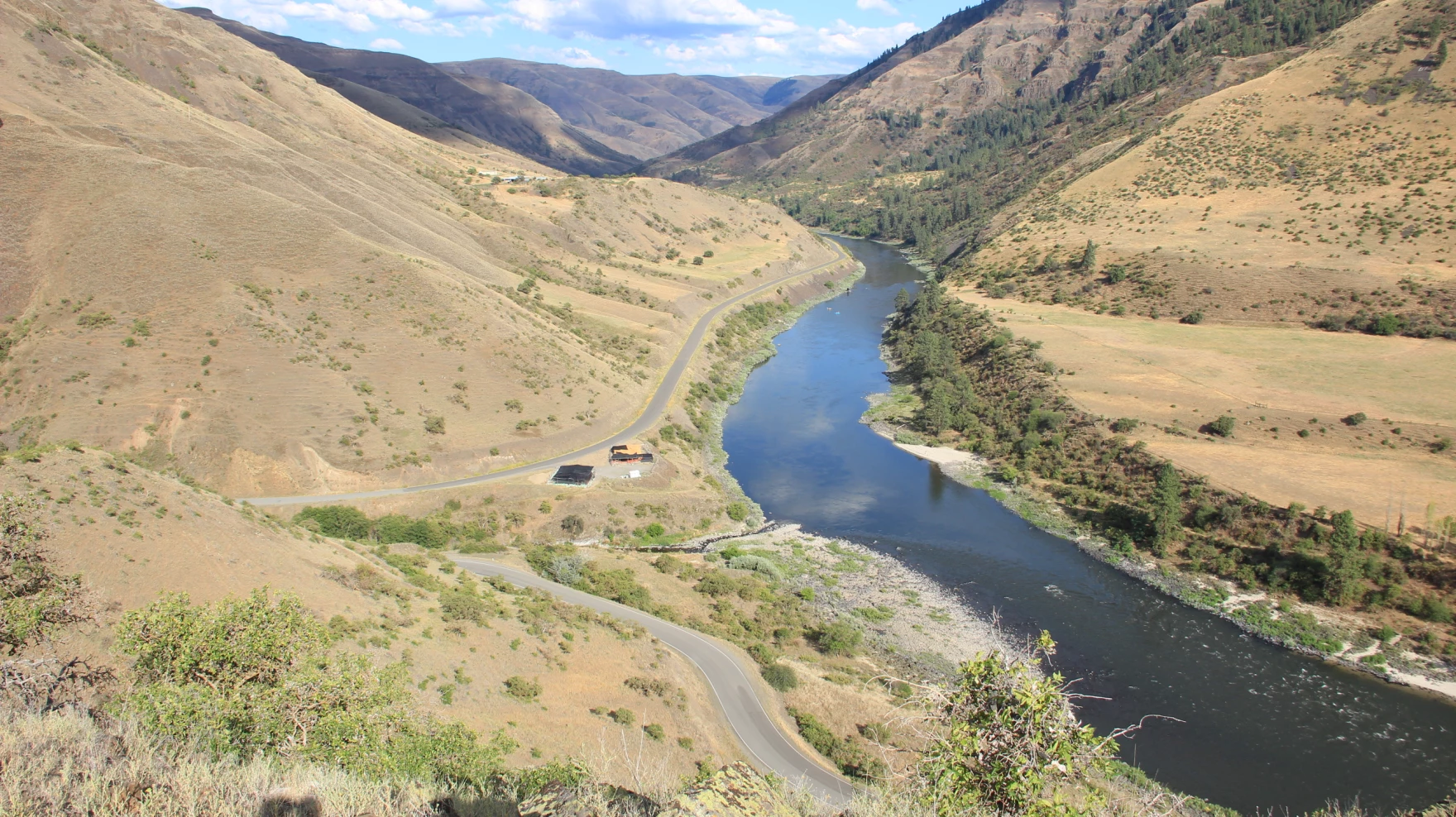
Overview of the Cooper’s Ferry site in the lower Salmon River canyon of western Idaho, where several stone points dating back nearly 16,000 years have been unearthed. Credit: Loren Davis/ Oregon State University
‘Elders in this place’
If you’re alive now, your ancestors were survivors, said Josiah Blackeagle Pinkham, from the Nez Perce Cultural Resource Program and a member of the tribe.
“It’s interesting to see how science backs up those types of [long-held tribal] claims,” Blackeagle Pinkham said. “New discoveries of old sites that show that we’ve [native tribes] been here for an incredibly long time.”
Blackeagle Pinkham said the tribes were this region’s oldest scientists.
“Humanity can learn something from that,” he said. “They can learn that it’s possible for one population of people to live in one place through floods, earthquakes and inter-tribal warfare – they can live through the extremities of climate and famine. There are a lot of things that have essentially tested those past populations and they’ve survived all that. And that’s a fascinating thing to think about – it’s incredible.”
Nez Perce of the future
Blackeagle Pinkham said he wants there to be Nez Perce people walking around here 16,000 years from now. He said he needs his children to be curious, pick up their culture and carry it on into the future.
“We are the elders in this place, and Americans are the junior kinfolk,” he said. “So, without that curiosity from Americans looking at us, they’re kind of sacrificing an example, really, of how Americans can survive here into the future. Americans don’t have the history we have here. Most Americans in this area, three generations, five generations, at most. That’s not a whole lot. That’s not a whole lot of history.”
He said his history reaches back into time immemorial – or before memory. Blackeagle Pinkham said he’d like to use this science to show others the longevity of the tribal relationship with this landscape – and to keep it going.
“I try to have a really deep and transgenerational curiosity. The kind of curiosity that I can pass off to my children and grandchildren, so they can get curious about: What’s important to us? What do we need to pass on? What do we need to let go of? In order to ensure that [Nez Perce] people are always going to be here.”
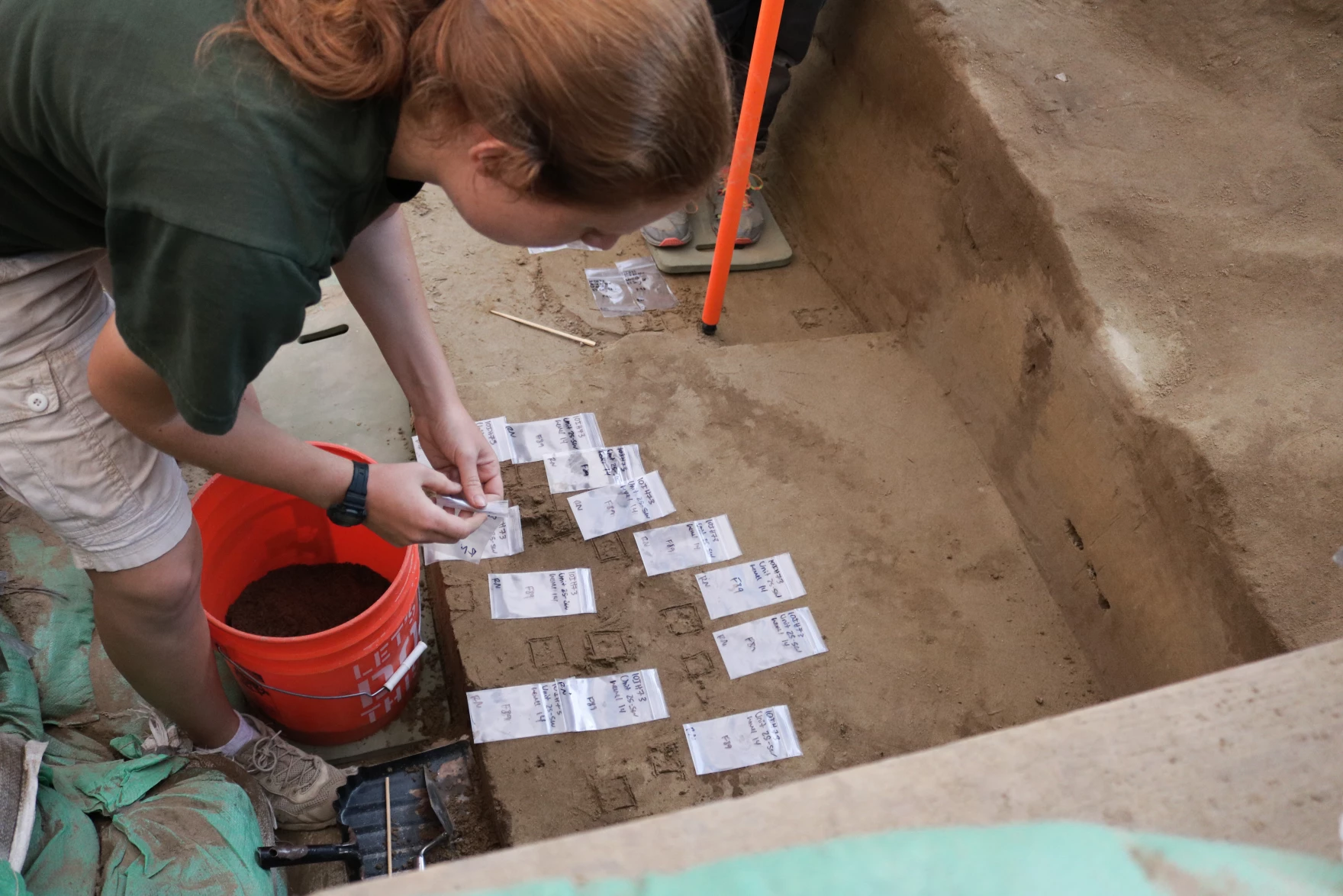
Excavator at work recording artifacts excavated from a pit feature at the Cooper’s Ferry site. Credit: Loren Davis/ Oregon State University

